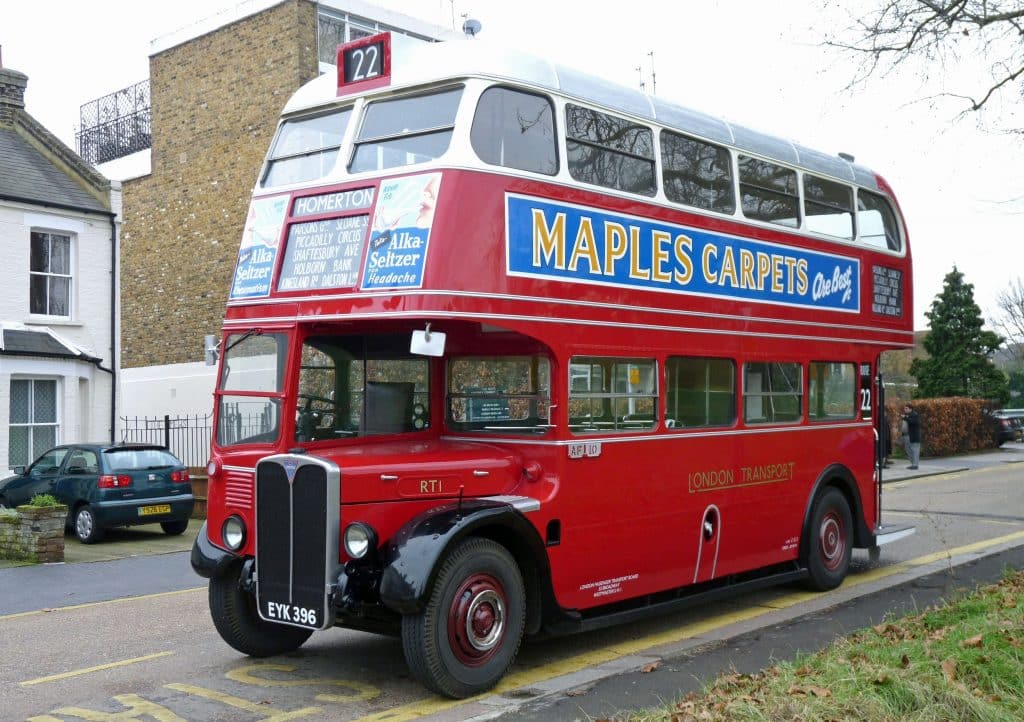The famous RT1 Double-Decker Bus is to London bus enthusiasts what the Flying Scotsman is to the world of steam locomotives; The RT1 Type Double Decker was built between 1939 and 1949 and was the forerunner of nearly 7,000 buses of its type which continued to dominate the streets of London right up until the late 1970s.
Regarded by many as an icon, the RT-type bus was way ahead of its time to the extent that the last of them was not withdrawn from front-line service until 1979.
It provided 56-seats across its 2 decks and a rear entrance with an open platform and the now infamous central pole to assist passengers in getting aboard and disembarking. It had an AEC Regent III chassis with an AEC 9.6 litre type A185 engine and a four speed, air operated pre-selective gearbox.
The type shown in the photograph above (courtesy of the London Bus Museum) is itself a remarkable survivor; after WW2, with two chassis changes, the bus became, firstly, a test-bed and then a mobile instruction unit, remaining with London Transport until 1978.
Initially acquired for preservation, it then became commercially-owned and ended up in the USA, where it almost met its end in a scrapyard. Brought back to the UK by some dedicated enthusiasts in the 1980s, it was eventually acquired by a private collector and subjected to a complete “nut and bolt” restoration, being returned to the condition in which it first appeared from London Transport’s Chiswick works in 1939.
This restoration was lengthy and cost over £200,000. Despite an offer from abroad for the fully rebuilt bus, the Museum was offered first refusal to purchase the vehicle and keep it in the UK permanently and was given 12 months to raise the purchase price of £150,000.
RT1 now has a secure future within the Museum’s collection and represents a fine example of London Transport’s pre-WW2 design, innovation and engineering excellence at its best, which went on to provide literally decades of service to the general public.
This bus itself can be seen today “in the flesh” by visiting the London Bus Museum or for further details you can visit their website at https://www.londonbusmuseum.com/
